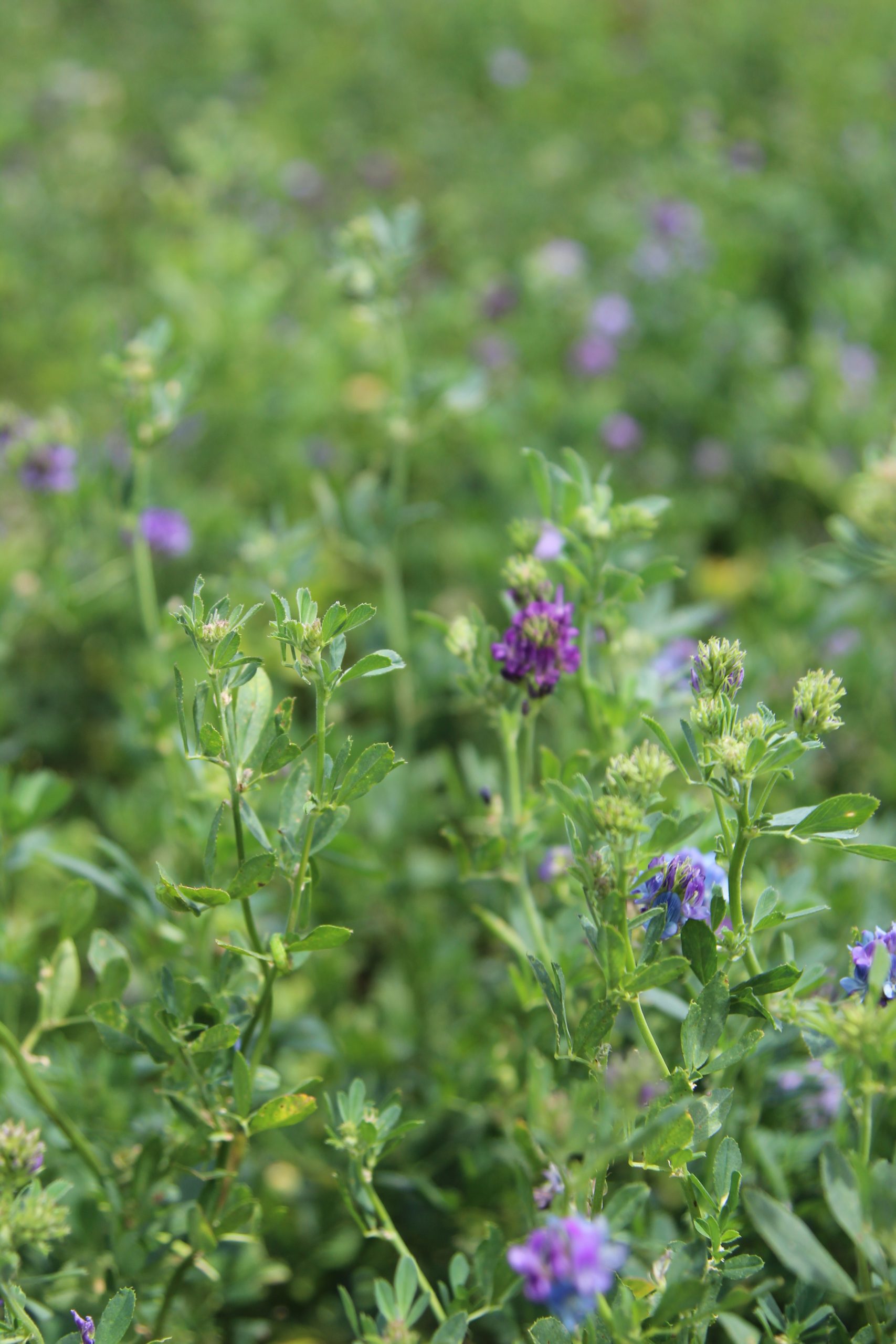Panelists share how field management, baling impact hay crop

Weed control, storage techniques and equipment each affect the quality of hay being produced.
Ward Laboratories recently hosted a webinar discussing producing high quality hay. Panelists were Sarah Bauder, South Dakota State University forage specialist and director of the Northern Plains Forage Association; Ben Beckman, forage specialist at the University of Nebraska-Lincoln and co-director for the Nebraska Sustainable Ag and Research Education Program; Mike Trammell, Oklahoma State University agronomy specialist; Bruno Pedreira, associate professor and forage specialist, University of Tennessee at Knoxville and the director of the University of Tennessee Beef and Forage Center; and David McIntosh, program coordinator and researcher at the UT Beef and Forage Center. Rebecca Kern-Lundbery of Ward Laboratories served as moderator.
Forage quality defined
Trammell said tests can guide the producer on how to achieve day-to-day maintenance needs of livestock and gauge an animal’s performance over time, but there is no one specific technique to predict quality hay.
“I’ve had folks tell me they can look at color or they can feel the forage and tell you what the value is,” he said. “But until you take a representative sample of that forage, whether it’s from silage or a lot of hay or from a pasture and take it into a qualified lab and actually get a test run on it, you’re just really flying blind.”
Whether the goal is putting weight on calves or increasing milk production or fiber production in sheep, it’s important to properly handle hay during the baling process to get the right kind of hay to feed, Trammell said.
Biggest factor
McIntosh said acid detergent fiber (ADF) and neutral detergent fiber (NDF) are important factors in lab tests. The amount of protein shown in a test can get “pretty low” as long as the fiber measurements are in an acceptable range, he said.
“I think that’s probably the most important characteristics I watch for when I scan samples,” he said. “Having an agronomic background, I see the samples come in the lab at different times of the year. I know what species they are. I know maybe they harvested it last week or two weeks ago, or even last fall, and I see the ADF and NDF that I can almost tell you what weather was doing.”
Pedreira said pre-harvest and post-harvest practices can both affect the amount of fiber in hay.
“In the pre-harvesting, it’s when the forage is still in the field,” he said. “I think we need to think about what we are doing in terms of frequency, intensity, how often am I harvesting the field and how intense is that harvest.”
Recognizing what conditions affect hay quality can help producers reach a higher quality of forage overall.
Good hay doesn’t have a lot of seed heads in it or mature plants, Pedreira said. Producers want to harvest hay when there are mainly leaves in the field.
“That will be my first goal, to be able to get the quality,” Pedreira said, but added it is also important not to harvest too close to the ground as that can affect the frequency that hay should be cut.
New equipment can help leave more of the plant at the ground, which also helps keep soil out of the harvested material.
Equipment
“Putting up hay is a science and an art,” Bauder said. “It really is both.”
Bauder said she tries never to discourage producers from following certain practices that are important to them, but she does suggest techniques that can help those new to haying or those with smaller equipment put up high quality hay.
“It’s just going to take longer sometimes, and you have to really pay attention if you don’t have those sensors and monitors,” she said. “Small investments can go a long way.”
She said the timing of cutting and checking moisture are crucial.
Even with a sickle bar mower, a producer should not scalp the ground, she said, adding that leaving something out there for the next cutting, even if it’s grass, it’s still important. She also stressed the importance of checking moisture in the hay and suggested taking advantage of different tools that allow the hay to be crimped.
“Being patient is important, and sometimes (with) raking, we want to rake as few times as we can so that we’re not messing with that hay and spending that money and time,” Bauder said.
Weevil season has all but ended in many parts of the country, and sometimes the alfalfa weevil will feed on the windrows. Bauder said it is important to get hay off the field and into storage soon after baling.
The biggest mistake producers make with hay is in storage, especially for twine-wrapped bales, Bauder said. When possible, getting the hay under a roof is best, she said, but for those without that option there are good principles to follow.
“Try not to put them in the shade,” she said. “Put them in rows that run north to south, so they get the sun exposure during the day from both sides. Keep 3 or 4 feet between the rows.”
Bales stored with space between them can have problems when the snow flies, so producers need be sure bales are stacked in a well-drained area, she said. Stacking bales on end is not good for them, either.
“That is just not good for your overall quality,” she said. “Honestly, those are all pretty basic principles, and even if you have old equipment or you’re lacking some of those steps, you just have to be patient and really pay attention, and you can put up just as high quality of hay. It just might take a little more elbow grease and time.”
Kylene Scott can be reached at 620-227-1804 or [email protected].



